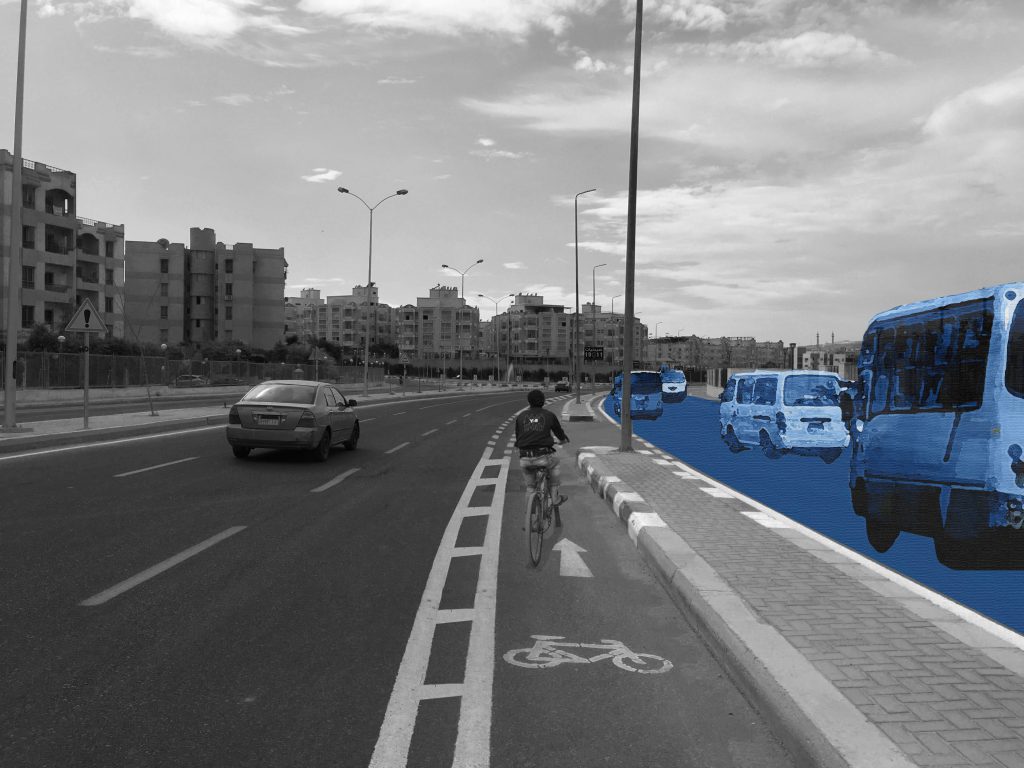TfC Data Lab
TfC’s data management platform enables rapid exploratory analysis, identification of data gaps, benchmarking and effective analytics.
Greater Cairo Region (GCR)
TfC maintains a comprehensive living database of public transport data and urban data for the GCR and Egypt. This database informs the work of the TfC Urban Mobility lab and the TfC Maps (PIS Lab).
We host our own open data portal with the latest data we acquire for the benefit of researchers, students and the community. TfC is also one of the founding partners of the DigitalTransport4Africa open data portal.
We pledged to advance sustainable urban mobility through open standards, open data, open source and open innovation. You can download some datasets directly & get in touch for more sophisticated data requirements.
Public Transport Data
- Routes: Origin, destination and roads taken by each bus route
- Stops: Location of virtual bus stops serviced by all routes
- Mode Coverage: Includes all formal routes operated or licensed by the CTA. Includes paratransit routes, known as informal routes.
- Routes: Geographic trace of active lines used by the Cairo Metro
- Stops: Location of physical stations, with destination by platforms used by each route
Projects that are planned, confirmed, or currently under construction.
Those include Egypt’s High Speed Rail, the Monorail, BRT lines, Metro lines and extensions, etc.
Urban Data
- To download publicly available administrative boundaries of the GCR, we recommend Humanitarian Data Exchange (HDX).
- For more specific and custom needs don’t hesitate to contact us.
- For the most recent publicly available population data on Egypt and the GCR, please refer to the Egyptian national statistics agency CAPMAS.
- For geographically distributed models of population contact us.
- There are no publicly available datasets on the distribution of employment locations within the GCR. For publicly available aggregate statistics please refer to the Egyptian national statistics agency CAPMAS.
- For geographically distributed models of employment distribution contact us.
Data Formats
GIS
Geographic Information Systems
Combines the power of a tabular database along with the power of location, enabling spatial analysis.
GTFS
General Transit Feed Specification
A Transit-specific format aimed for trip planning but is also used for analysis and understanding the transit network’s characteristics
Data Process

Data Collection
Multiple scopes are defined (Geographic, Temporal, etc.) Once the Data Collection strategies and protocols are in place, the actual data collection commences

Data Processing
The Digitization of data is usually the first step in processing. Cleaning is the second step and is not necessarily limited to Quality Assurance, but could also include the different processes that are done to understand the anomalies that the data show. The Data is then usually transformed from GIS Layers to GTFS Feeds.

Data Analysis
Making sense out of the complex data of human interactions and urbanism, especially in Cairo, requires constant innovation in the analysis approaches and techniques. Spatial and network analysis are amongst the many tools that enable us to inform our clients and the public user.
Training & Capacity Building
We offer consultation and hands-on-training to organizations in the Transport sector ranging from educational institutions and research labs to international organizations and government entities. Check out our dedicated training page.
Previous Projects
Greater Cairo Region Mobility Assessment and Public Transport Improvement Study
The study proposes public transport investment projects to improve efficiency and environmental footprint of the region’s economy. It will also address inclusiveness challenges by providing safer, more reliable, and more comfortable experience for all and especially women, vulnerable groups, and people with special needs.
A core component of the study were multiple mapping and data collection activities to support the development of a 4-step transport model on CUBE.
A team of 42 field researchers and two field research managers endured challenging conditions in the midst of the COVID-19 epidemic to capture data for the enormous Greater Cairo Region public transport network, as well as data on passengers and traffic flows.



Greater Cairo Region Digitalization

Mapping the transit network in the Greater Cairo Region started with mapping the New Urban Communities, the satellite cities surrounding central Cairo & Giza. We partnered up with ‘Digital Matatus’ along with Takween Integrated Development to form ‘Digital Cairo’
Between 2017 and early 2018 we managed to map over 90% of the formal and semi-formal transportation network in the NUCs.
The resulting datasets are GIS layers describing the stops and the trips that form the network, along with a GTFS feed for the same network with travel time estimations, enabling research and decision making on a scale and with a level of detail unprecedented.


FAQs
Datasets published are stored in industry standard GIS and GTFS files:
- Geographic Information Systems (GIS)
- Combines the power of a tabular database along with the power of location, enabling spatial analysis.
- Could present a visual of our trips network overlayed on a base-map
- Can be opened by the open-source QGIS or the proprietary ArcMap, as well as other GIS software packages.
- General Transit Feed Specification (GTFS)
- A Transit-specific format aimed for trip planning but is also used for analysis and understanding the transit network’s characteristics.
- To learn more on GTFS we recommend the excellent documentation maintained on Google Developers.
- GTFS files are composed of a series of text files collected in a ZIP file, and can be opened using any spreadsheet editor such as Microsoft Excel. More advanced use cases are possible using dedicated GTFS consumer applications such as Open-Trip-Planner.
Almost all digital maps are produced using a GIS. The term GIS is a catch all term for any system that can store, manipulate and display digital map data, they range from powerful desktop systems such as QGIS and Esri’s ArcGIS.
The standard for storing and exchanging map data in the GIS world is the Shapefile. Despite it’s name, a Shapefile is usually made up of four files (although it can be more).
Unfortunately no. Any application or use of the GIS shapefiles that generates revenue through payment, ads or any other form of direct or indirect monetization is prohibited by the Creative Commons CC BY-NC license which the GIS shapefiles use. Please contact us to discuss the option of licensing the data.
Of course you can. However, any software or research produced must be for a non-profit purpose, be shared under Creative Commons CC BY-NC license or other open license and properly attribute the data. We encourage you to explore public transit in Cairo, produce data-driven research papers and graduation projects and share the results to help improve mobility in Cairo.
Please feel free to contact us with your question. Please type ‘QUESTION’ in the e-mail subject.
